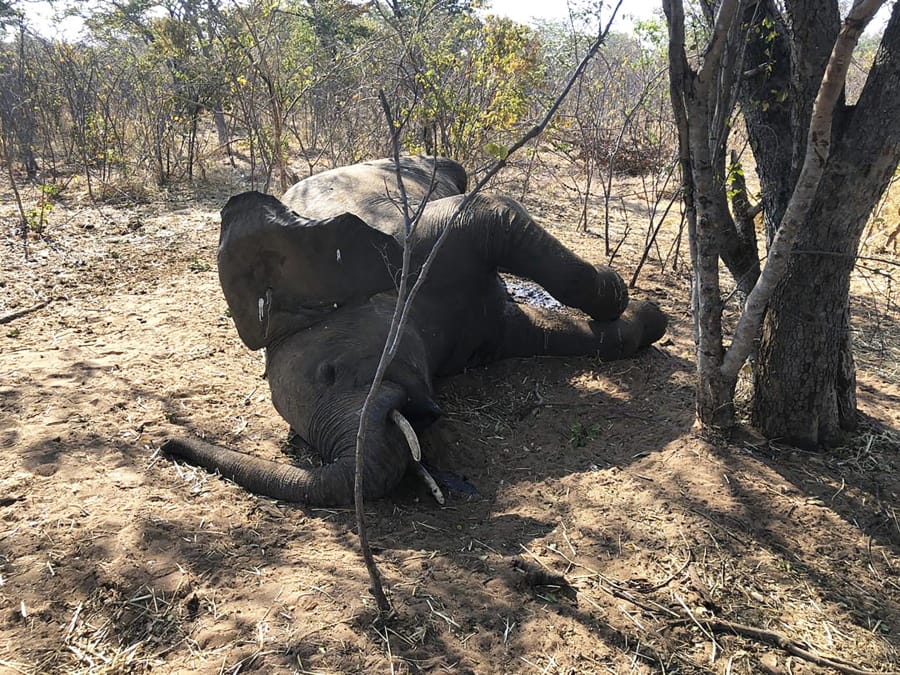HARARE, Zimbabwe — The number of elephants dying in western Zimbabwe from a suspected bacterial infection, possibly from eating poisonous plants, has risen to 22, and “more deaths are expected,” a spokesman for the country’s parks agency said Wednesday.
Most of the elephants dying in the Pandamasue Forest, located between the vast Hwange National Park and Victoria Falls, were young or weak, said Tinashe Farawo, spokesman for the Zimbabwe National Parks and Wildlife Management Authority.
With food scarce, younger elephants that can’t reach higher tree branches “end up eating everything and some of the vegetation that they eat might be poisonous,” Farawo told The Associated Press.
He said the problem could persist through the dry season. Zimbabwe has been facing successive climate-induced droughts in recent years, leaving animals with less water and vegetation for food, he said.
Apart from possible bacterial infection, some of the animals could be dying due to the stress of walking long distances for food and water, said Farawo.
Farawo said overpopulation had become “the biggest threat” to the survival of wildlife in the southern African country’s parks. The “animals are becoming a threat to themselves,” he said.
The dead young elephants were found with their tusks still on their bodies, ruling out poaching. In recent years poachers in Zimbabwe have poisoned dozens of elephants with cyanide and then have taken their ivory tusks to sell them to illegal traders.
Investigations will also try to establish if there is a link between the deaths and those reported in neighboring Botswana. Farawo, the parks spokesman, said so far “there is no evidence to link the Botswana incident and what is happening in Zimbabwe.”
Scientists are investigating the deaths last month of more than 275 elephants in Botswana’s Okavango Delta area. Poaching, poisoning and anthrax have also been ruled out in those deaths.
Animal welfare groups such as the African Wildlife Foundation, have expressed “concern” at the mysterious deaths of elephants in Botswana and Zimbabwe.




